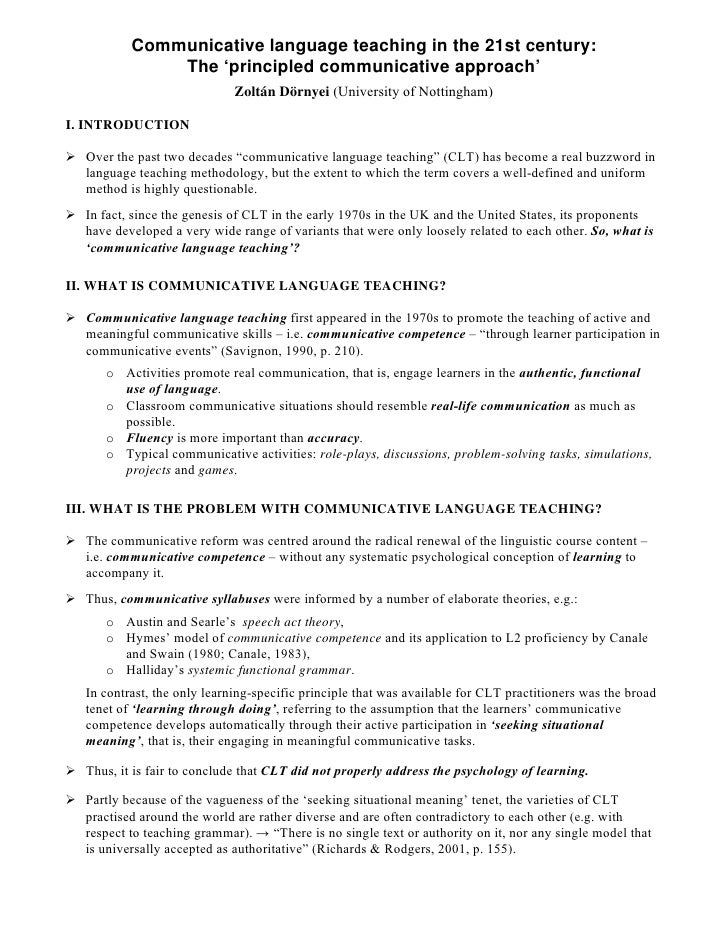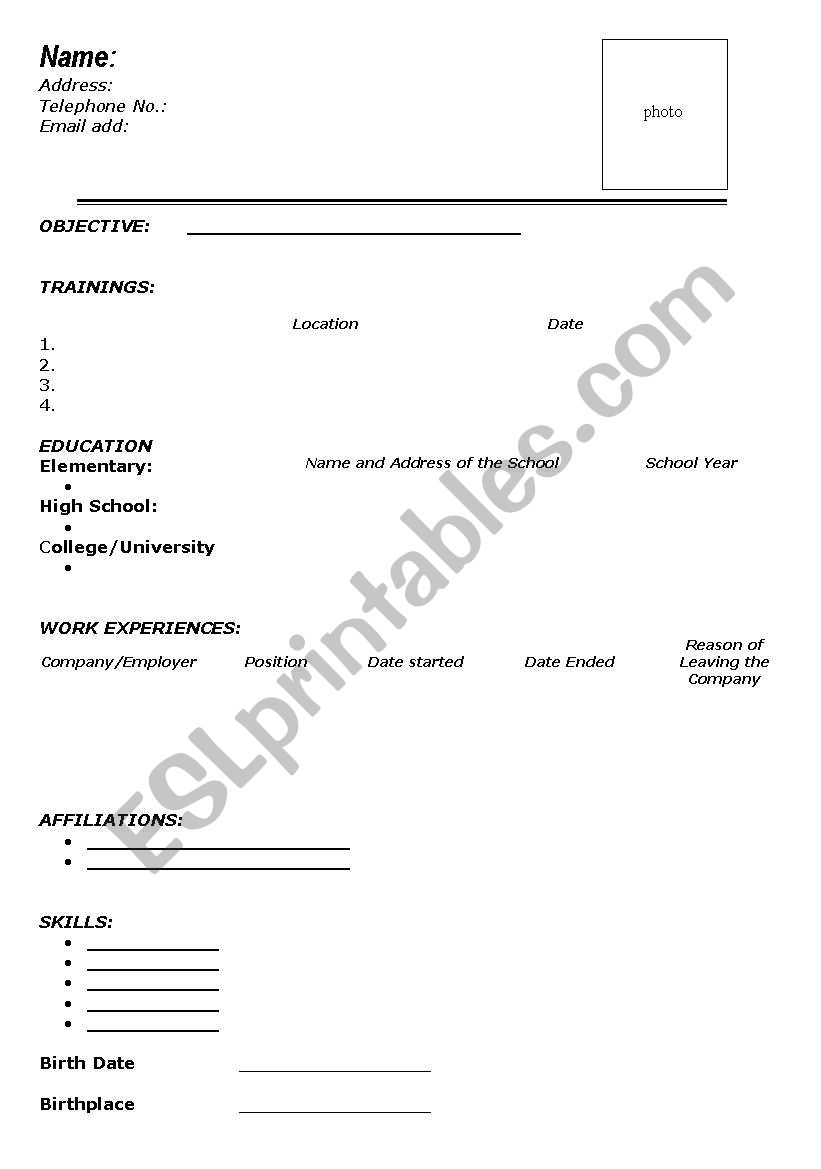
Functional language is language that we use to perform various functions, such as making requests, giving advice, complaining, agreeing, asking permission, etc. Learning functional language gives students of English the skills to communicate effectively in various everyday situations. Functional language contains a lot of fixed expressions Iranian Journal of Language Teaching Research 1(1), (Jan., ) learners attempt to compose a written piece, they might use transfer as a tool to learn or as a means to convey their meaning; they may use it to formulate hypotheses about target language and to test those hypotheses Language development in humans is a process starting early in life. Infants start without knowing a language, yet by 10 months, babies can distinguish speech sounds and engage in blogger.com research has shown that the earliest learning begins in utero when the fetus starts to recognize the sounds and speech patterns of its mother's voice and differentiate them from other sounds after birth
Language development - Wikipedia
On this page, communicative language teaching essay, you will find all our ESL teaching activities, games and worksheets related to functional language. Functional language is language that we use to perform various functions, such as making requests, giving advice, complaining, agreeing, asking permission, etc. Learning functional language gives students of English the skills to communicate effectively in various everyday situations.
Functional language contains a lot of fixed expressions. Because there are so many expressions for each function, it is best to teach these structures in manageable chunks. Try to limit the number of structures you introduce in each lesson to help your students remember the specific phrases. There are some basic structures that when introduced enable students to make themselves understood even if their level of English is quite low.
The teaching resources in this section include worksheets, lessons, games and fun communicative activities to help demonstrate and practice each function. Each teaching activity is categorized, according to the level and type of activity. To help students put the language structures into context, we have also created a variety of activities that use dialogues and role-plays based on realistic situations.
By focusing on and practicing these expressions and structures regularly, students will be able to build on their English language knowledge and communicate successfully. Future Perfect Future Perfect Continuous Future Perfect Simple. Past Simple Present Perfect Continuous. Describing People's Appearance Describing Places Describing Things Getting to Know You Giving Advice Giving Directions Giving Opinions.
Money Numbers Parts of the Body Reading Comprehension Seasons Space Sports. Paragraph Writing Punctuation. Reading Comprehension Reading Skills. Referenced Essays The Writing Process. Answer Games Brainstorming Games Category Games Classic Childhood Games Counting Games Describing Games Drawing Games. Drilling Activity Games First Day Introduction Games Flashcard Games Grammar Games Hangman Games Listening Games. Classroom Management Concept Checking Cultural Awareness Developing Spoken English Dictations Eliciting Techniques.
Lesson Planning Learning English Idioms Listening Comprehension Patterns of Communication Personalising Activities Teaching English Vocabulary. Teaching Large Classes Teaching Mixed-Ability Classes Teaching Small Classes Ten Ways to Begin a Lesson Problems Learning English Reading in English. The First Day of Class Using Correction in Class Using Music in Class Using Song Gap Fills Vocabulary Queries. Online Membership Download the Entire Library.
Functional Language - ESL Activities, Worksheets and Games. Agreeing and Disagreeing. This page provides a wealth of functional language activities, worksheets and games to help teach your students how to agree and disagree with positive and negative statements and opinions. Asking Permission, communicative language teaching essay. On this page, you communicative language teaching essay find functional language ESL, activities, worksheets and games to help teach your students how to ask for, give and refuse permission using a variety of expressions.
Asking Questions. The functional language games, activities and worksheets on this page help students master how to ask and answer questions on a variety of everyday topics. Classroom Language. Here you will find classroom language worksheets and ESL activities that help students learn and practice vocabulary and phrases used during English class by the teacher and students. Complaining and Apologizing.
These functional language role-plays, activities, games and lessons help to teach students how to make and deal with complaints in English. Students also learn how to soften complaints, apologize, communicative language teaching essay, make requests and give excuses.
This page also contains several authentic role-plays and teaching activities that cover common and business complaints. Critical Thinking and Problem Solving.
On this page, you will find engaging teaching activities, topic-based lessons and worksheets to help students practice and improve their critical thinking and problem-solving skills. The resources in this section also combine critical thinking and problem-solving with other useful skills such as negotiating, prioritizing, ordering, analyzing and evaluating. Describing Character and Personality.
This page offers a range of ESL activities, worksheets communicative language teaching essay games to teach students how to describe someone's personality and character. These resources also help students learn a variety of positive and negative character and personality adjectives. Describing People's Communicative language teaching essay. These ESL activities, worksheets, lessons and games help students learn how to describe someone's appearance. This includes their physical appearance and clothing.
Students can learn how to use the verb 'to communicative language teaching essay to describe height, communicative language teaching essay, body build and age, and how to use 'have' and 'has' to describe hair colour, hair length and facial features. These resources also help students to practice a wide range of adjectives related to appearance.
Describing Places. This page provides activities, worksheets, lessons and games to help students practice describing places, famous landmarks and buildings.
There are also resources to help students practice related descriptive adjectives and language. Describing Things, communicative language teaching essay. Here you will find a variety of entertaining games, activities and worksheets to help students practice describing things. The resources also help students learn essential language and adjectives related to describing objects.
Getting to Know You. These functional language activities, games, icebreakers and worksheets help students talk about themselves and become acquainted with one another.
The resources can also be used on the first day of class to help your students get to know each other and share personal information and interesting facts. Giving Advice. These functional language games, activities, lessons and worksheets help students learn how to ask for and give advice. The resources also help teach students a variety of phrases and structures for asking and giving advice on a number of everyday topics. Giving Directions. This page offers engaging functional language ESL communicative language teaching essay, games and worksheets to help students learn and practice how to ask for and give directions.
Giving Opinions. In this section, you will find functional language activities, communicative language teaching essay, worksheets and games that help students learn how to ask for and give opinions using a variety of expressions. The page also contains a wide range of resources to help students practice explaining, justifying and summarizing opinions, agreeing, disagreeing and persuading.
Students can also participate in debates where they express and defend their opinions by arguing for or against a topic. Giving Personal Information. On this page, there are functional language activities, worksheets and games to help teach your students how to ask communicative language teaching essay answer personal information questions.
These insightful resources can also be used on the first day of class to help students get to know each other and make introductions. Greeting and Introductions.
These functional language activities, worksheets and role-plays help to teach students how to formally and informally greet someone, introduce themselves and others, make small talk, end a conversation and say goodbye.
This page also provides fun activities for students to use on the first day of class to get to know each other and make introductions. These functional language ESL activities, worksheets and games help students to master holiday vocabulary and common expressions used in holiday and travel situations.
There are resources to help students talk about all aspects of holidays, such as describing holiday experiences, talking about travel plans, booking a hotel, etc. Indirect Questions. This page provides worksheets, role-plays and activities about indirect questions. These resources help to teach students how to ask questions politely. Communicative language teaching essay resources also help students learn how indirect questions are formed, why we use them and how to change direct questions into indirect questions.
These communicative language teaching essay language activities and games focus on inviting. There are resources to help students learn and practice how to make, accept and decline invitations as well as give communicative language teaching essay and make excuses. Making Arrangements. On this page, you will find functional language activities about making arrangements that help students practice scheduling, rescheduling, confirming and cancelling appointments in English.
Making Decisions. Here are some functional language games and activities that help to teach students how to talk about decisions. Making Requests. The functional language activities, games and worksheets on this page focus on making requests.
These useful resources help students learn how to make, accept and decline requests using a variety of expressions, communicative language teaching essay. Making Suggestions. This page provides teachers with a variety of functional language activities, worksheets and games based on making, accepting and rejecting suggestions.
There are also resources to help students learn how to raise objections communicative language teaching essay suggest alternatives.
Ordering Food and Drink. These functional language activities and worksheets help to teach students how to order food and drink in various situations. The resources also provide teachers with a wide range of authentic role-plays to help students master restaurant language and useful dining expressions, communicative language teaching essay.
This page is packed with functional language activities and worksheets to help teach students shopping language. The page also contains a variety of engaging role-play activities to help students practice buying and selling items in a shop.
Small Talk. These functional language activities, communicative language teaching essay, games, role-plays and worksheets help teach students techniques for keeping a conversation going and making small talk. These techniques include using echo questions and words, asking follow-up questions and responding with phrases that show attention, agreement and interest.
Communicative Language Teaching: 40 Years On: A Public Presentation by Scott Thornbury
, time: 1:22:15Grammar Teaching: Implicit or Explicit? - blogger.com

Text type (e.g. report, case study, essay, reflective piece, annotated bibliography etc.) Structuring of the argument (usually presented as one main idea with supporting evidence for each predicate) Appropriate level of detail within document (e.g. presentation of supporting evidence, referencing system) B ased on my 15 years of EFL (English as a Foreign Language) teaching experience, the statement “grammar teaching should be implicit, not explicit” could be argued both for and against.. Whether to teach grammar as an extracted focus of ELT (English Language Teaching) or more passively as an inductive, integral topic has been the theme of countless debates on the part of institutions Functional language is language that we use to perform various functions, such as making requests, giving advice, complaining, agreeing, asking permission, etc. Learning functional language gives students of English the skills to communicate effectively in various everyday situations. Functional language contains a lot of fixed expressions

No comments:
Post a Comment